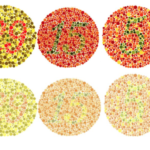Good afternoon FAAST Aviation friends, Enjoy your holiday time.. On today's occasion the admin will share interesting information about Is So A Flight Attendant Can't Have Scars?. For those of you who are curious, Read the admin's explanation until it's finished..
Types of Scars
Scars can result from various types of injury or trauma to the skin and underlying tissue. Following are some common types of scars:
- Burn scars: Occurs due to heat exposure, like fire, hot liquid, or other hot surface. Burn scars often have an uneven texture and can be pink, redness, or white.
- Scars from cuts: Occurs as a result of an incision in the skin, such as from a knife or other sharp object. Cut scars usually have a straight line and a smoother texture.
- Scars from puncture wounds: Occurs when an object pierces the skin, such as a knife or other sharp object. Puncture scars can vary in appearance depending on the depth and location of the wound.
- Scars resulting from bruises or impacts: Occurs when the skin is traumatized by impact or pressure, without damaging the skin surface. Scars from bruises can usually be blue, young, or green, and then disappear over time.
- Scars from surgery: Occurs after surgery and often has a flat, smooth appearance. Surgical scars can vary depending on the surgical technique used.
- Scars from keloid scars: Keloids are a type of scar that occurs when the healing process is excessive, so that the scar tissue extends beyond the original injury area. Keloids usually look thick, stand out, and darker in color than the surrounding skin.
- Acne scars: Occurs due to inflammation of the hair follicles in the skin. Acne scars can be blemishes, Red stain, or even small depressions in the skin, depending on the severity of the acne.
- Scars from a fall: Occurs after injuries resulting from falls or impacts on hard surfaces. These scars can vary in shape and size depending on the level of trauma the skin has experienced.
Is So A Flight Attendant Can't Have Scars?
How to Get Rid of Scars
Completely removing scars may be difficult, but there are steps you can take to help improve the appearance of scars and make them less visible.
- Medical treatment: Some types of scars, such as severe scarring or keloids, may require medical treatment from a doctor or dermatologist. This may include the use of special creams or ointments, medical procedures such as laser therapy, or use of steroids to reduce inflammation.
- Use of Cream or Ointment: There are various creams and ointments commercially available that claim to help reduce the appearance of scars. Some of the commonly used ingredients in these creams include vitamin E, rosehip oil, or chemicals such as hydroquinone. However, The effectiveness of this cream may vary between individuals.
- Textured Silicone or Gel: Applying textured silicone or gel to scars has been shown to be effective in helping reduce their appearance. These products are usually available in sheet form, gel, or a cream that can be applied directly to the scar.
- Use of Natural Oils: Some natural oils, like almond oil, rosehip oil, or lavender oil, It is claimed to have regenerative properties and can help improve the appearance of scars. This oil is usually applied by rubbing it directly onto the scar.
- Pay attention to Cleanliness and Protection: It is important to keep the scar clean and protected from direct sunlight. UV rays can make scars darker and more visible. Use sunscreen with a high SPF when exposed to sunlight.
- Lifestyle Changes: Adopt a healthy lifestyle, including eating nutritious food, drink enough water, and avoid smoking habits, can help speed up the skin healing process and improve the appearance of scars.
Before using any treatment method, it is important to consult a doctor or dermatologist, especially if your scars are severe or if you have other health concerns.
Tips for Caring for Scars
- Keep Clean: It is important to keep scars clean to prevent infection. Wash the scar gently using mild soap and warm water. Avoid rubbing the scar too hard as this can cause irritation.
- Protect Scars: Always protect the scar from additional injury or friction that could worsen the condition. Use a bandage or medical bandage if necessary, especially if the scar is located in an area that is susceptible to friction or pressure.
- Avoid Excessive Sun Exposure: Sunlight can make scars darker and more visible. Use sunscreen with a high SPF on scars and avoid direct sun exposure during the healing process.
- Skin Hydration: Keeping skin hydrated can help improve its texture and elasticity. Use moisturizer regularly on scars to help maintain skin moisture.
- Don't Scratch Scars: Scratching scars can cause irritation and slow down the healing process. Avoid scratching or rubbing the scar, and let the skin carry out its natural healing process.
- Use Topical Treatments: Some creams or ointments contain ingredients such as vitamin E, aloe vera, or rosehip oil can help improve the appearance of scars. Use these products as directed and consult a doctor or dermatologist if necessary.
- Be patient: The scar healing process can take time, and not all scars will disappear completely. Be patient and continue to take proper care for best results.
Remember that every scar is unique, and response to treatment may vary between individuals. If you have concerns about your scar or if the scar is not healing well, it is important to consult a doctor or dermatologist for further advice.
*If you want to share interesting information about flight attendants, Don't hesitate to write it in the comments column..























Leave a Reply